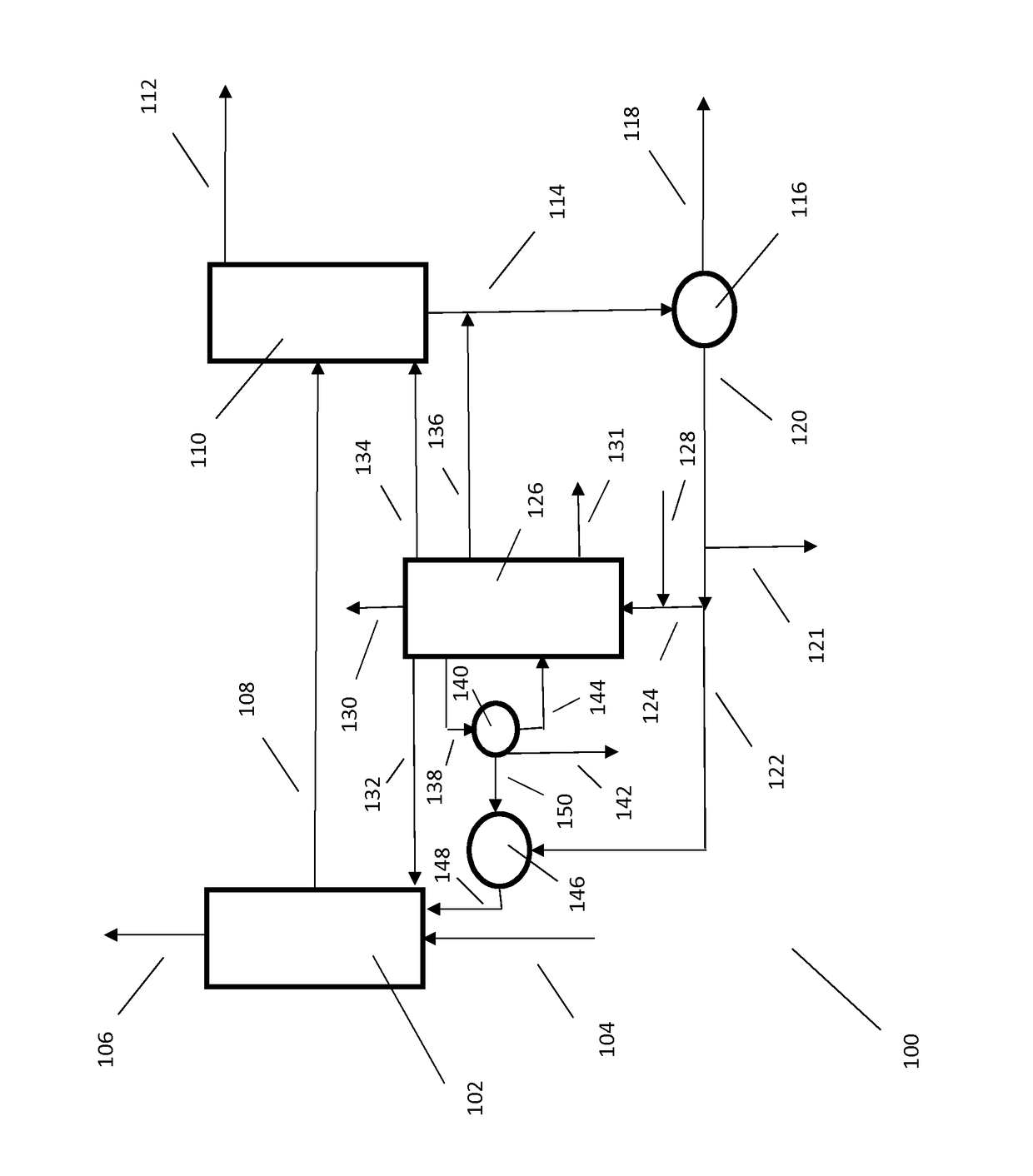Processes for removing co-produced oxygenated organics from anaerobic fermentation broths for the bioconversion of syngas to product oxygenated organic compound
a technology of anaerobic fermentation and bioconversion process, which is applied in the direction of biofuels, fermentation, etc., can solve the problems of loss of downtime and loss of product oxygenated organic compound, and achieve the effect of reducing the amount of was
- Summary
- Abstract
- Description
- Claims
- Application Information
AI Technical Summary
Benefits of technology
Problems solved by technology
Method used
Image
Examples
Embodiment Construction
[0022]All patents, published patent applications and articles referenced herein are hereby incorporated by reference in their entirety.
DEFINITIONS
[0023]As used herein, the following terms have the meanings set forth below unless otherwise stated or clear from the context of their use.
[0024]The use of the terms “a” and “an” is intended to include one or more of the element described.
[0025]Oxygenated organic compound means one or more organic compounds containing two to six carbon atoms selected from the group of aliphatic carboxylic acids and salts (lower carboxylates, e.g., acetate anions), alkanols and alkoxide salts, and aldehydes. Often oxygenated organic compound is a mixture of organic compounds produced by the microorganisms contained in the aqueous broth. The sought oxygenated organic compound from the bioconversion of syngas is referred to herein as product oxygenated organic compound or simply oxygenated organic compound unless the context is clear that it is referring to a...
PUM
| Property | Measurement | Unit |
|---|---|---|
| mass percent | aaaaa | aaaaa |
| mass percent | aaaaa | aaaaa |
| temperature | aaaaa | aaaaa |
Abstract
Description
Claims
Application Information
 Login to View More
Login to View More - R&D
- Intellectual Property
- Life Sciences
- Materials
- Tech Scout
- Unparalleled Data Quality
- Higher Quality Content
- 60% Fewer Hallucinations
Browse by: Latest US Patents, China's latest patents, Technical Efficacy Thesaurus, Application Domain, Technology Topic, Popular Technical Reports.
© 2025 PatSnap. All rights reserved.Legal|Privacy policy|Modern Slavery Act Transparency Statement|Sitemap|About US| Contact US: help@patsnap.com

